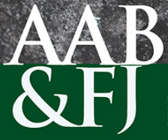Abstract
In the 1980s, with the rise to dominance of governments with neoliberal economic and social agendas, the public sector in major western countries underwent a process of fundamental reforms. A key aspect of the change imposed was the implementation of a market-oriented, cost-efficiency focus towards the management of public sector organisations, described collectively as the New Public Management (NPM) model (Kelsey, 1995; Boston et al, 1996; Easton 1996; Barton, 2002, 2005a, 2005b; Carnegie & West, 2005; Ball & Grubnic, 2008; Davis, 2010). This reform process included the imposition of regulatory measures requiring public sector organisations to provide annual financial reports prepared on an accounting basis comparable to those for the private sector, and incorporated an obligation to disclose (at economic values) all assets held. For public benefit entities holding heritage, cultural and community assets (HCA), this reporting requirement has been particularly problematic, entailing substantive changes to public accounting policy.
This paper critiques the political ideologies and practices of the NPM model, and challenges its assumptions that private sector financial reporting requirements, based on international accounting standards and Generally Accepted Accounting Practice (GAAP), are appropriate for universal application to public benefit and other not-for-profit entities holding HCA. In particular, the paper argues against the NPM assumption that reporting all HCA in economic terms improves accountability in public benefit entities. Instead, the paper proposes an alternative reporting model based on a set of cultural rather than economic values for reporting HCA. It suggests as an exemplar the ‘Wellbeing of Communities’ reporting and accountability framework devised for application by an indigenous New Zealand Māori educational institution, Te Wānanga-o-Raukawa.
Keywords: Accountability, Accounting, Heritage and cultural assets, Māori, Maori, Public benefit entities
How to Cite:
Wild, S., (2013) “Accounting for Heritage, Cultural and Community Assets – Alternative Metrics from a New Zealand Māori Educational Institution”, Australasian Accounting, Business and Finance Journal 7(1), 3-22. doi: https://doi.org/10.14453/aabfj.v7i1.2
Downloads:
Download PDF
496 Views
5432 Downloads

